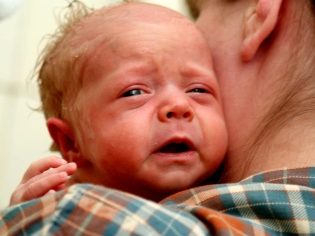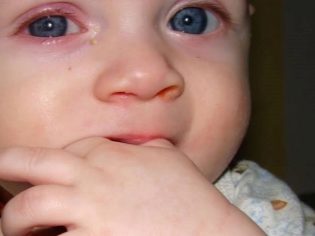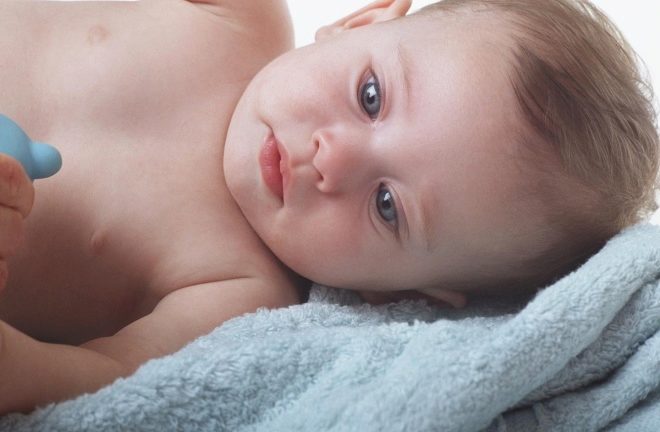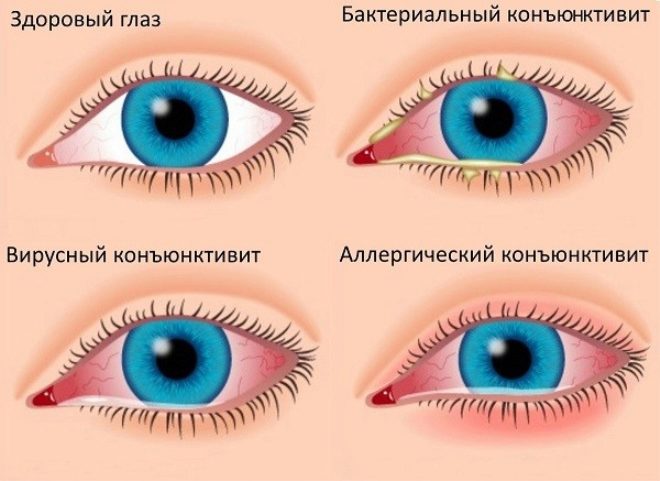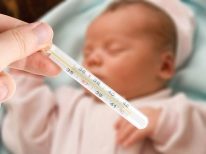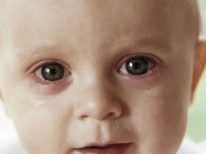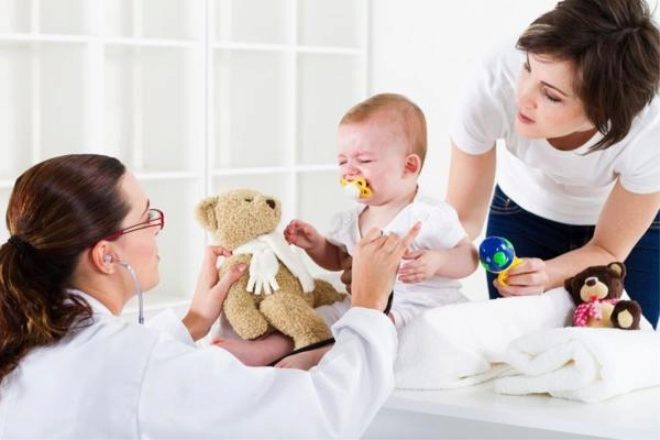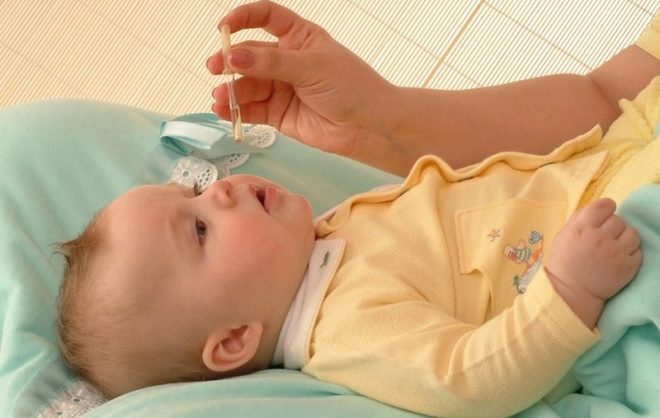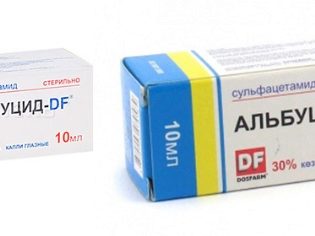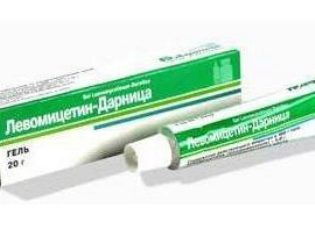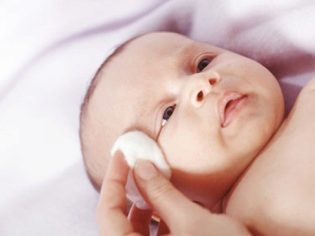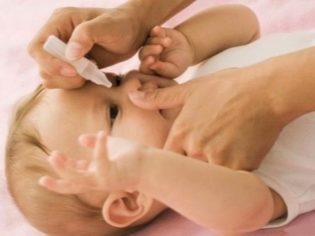Conjunctivitis in newborns and infants
Very often in the first year of life kids can get sick with conjunctivitis. In this disease, the eyes become inflamed. The lacrimation increases, the well-being of babies worsens a lot. Late assistance may cause the development of adverse complications. In severe cases - even lead to visual impairment.
Main reasons
Multiple factors can cause conjunctivitis. In newborns and babies of infancy, the most common causes are:
- Infections. Both bacteria and viruses can cause the disease. In more rare cases, infection occurs with protozoa and fungi. The course of diseases caused by different pathogens will differ significantly from each other. Clinical symptoms appear differently. The treatment is carried out specific, aimed at the destruction of infection in the body.
- Traumatic injuries. Kids from 3 months begin to actively explore the world. All new items are of particular interest to them. They are pulled in the mouth or tasted. A child under the age of 5 months may inadvertently injure his eyes. The mucous membrane of the eyes in babies is still very sensitive and vulnerable. After such a traumatic injury, conjunctivitis develops.
- After birth. If the expectant mother falls ill with a cold or an infectious disease during pregnancy, the baby can easily become infected. The fact is that a virus is a very small particle. It easily passes through the placental barrier and causes inflammation in the baby. In this case, congenital forms of conjunctivitis occur. This variant of the disease occurs in children from the 1st month of life.
- Allergy. The manifestation of an allergic reaction is the development of inflammation of the mucous membrane of the eyes. Most often this option is found in babies aged 6 months, 8 months. At this time, new foods are introduced into the child’s diet, which can trigger an allergy to unfamiliar foods. Babies at the age of 7 months are sick, as a rule, more often than younger children and newborns.
- Violation of personal hygiene. Each child must have their own towels and dishes. If there are several babies of different ages in the family, they should use only their own hygiene items. When using someone else's towels, an infection is easily spread, a disease can develop.
Types and forms
To date, a variety of options for the course of the disease a huge amount. To separate the types and forms of the disease into specific categories, doctors use a variety of classifications. This allows you to accurately establish the diagnosis with an indication of the cause of the disease, the course of the disease and determine the more likely prognosis for the disease.
If the disease appears in the baby for the first time in life, then this option is called acute. This type of conjunctivitis is recorded in a special medical record of the baby.
After the treatment, the return of the disease in acute forms should not be. If the process is repeated after 2 months or more, then this option is called recurrent. This form of the disease usually becomes chronic.
All infectious conjunctivitis is divided into several forms (including the pathogen that causes them). For different types of eye diseases, separate therapies and medicines are used. Infectious conjunctivitis can be:
- Viral. Most often occur in babies from the age of 4 months. Various viruses cause them. Quite often adenoviruses can cause conjunctivitis in newborn babies. Getting on the mucous membrane of the eye, they quickly damage the cells and cause inflammation. After some time, with the blood stream, the viruses rapidly spread throughout the body, causing inflammation in the internal organs.
- Bacterial. The peak incidence in babies - at 9 months, 11 months. Staphylococci, streptococci and anaerobic bacteria are quite common causes of the occurrence of infectious eye diseases in babies in the first year of life. The disease caused by alien microorganisms in newborn babies can be quite difficult. In some cases, hospitalization is required. Newborns with purulent forms of bacterial conjunctivitis are extremely undesirable to treat at home.
- Chlamydia. Caused by chlamydia. Most often, the infection is still in utero, from the mother. If the expectant mother is infected with a chlamydial infection, the baby can also easily become infected. With the blood flow, microorganisms are not only spread throughout the maternal organism, but also affect the child. If during the 9 months of pregnancy a woman has a pathology of the placenta, the intrauterine risk of infection of the future baby increases many times.
- Fungal. There are quite rare. The causative agents of the disease in this case are pathogenic fungi. Most often this variant of the disease occurs in weakened children or toddlers with chronic immunodeficiencies. The disease develops for quite a long time. The treatment requires the appointment of special antifungal drugs.
What are the main symptoms and signs of the disease?
When conjunctivitis in children, inflammation of the mucous membrane of the eyes occurs. As a rule, one eye is affected first. Usually after a couple of days, the inflammatory process also begins in the second.
The most common symptoms in newborns and babies in the first year of life with conjunctivitis are:
- Red eyes. The entire white surface of the eye becomes red. Some babies show blood vessels. Bright light irritates the inflamed mucosa. The kid tries not to open his eyes, as this increases the pain.
- Tearing. One of the most characteristic signs of conjunctivitis. From the affected eye throughout the day a lot of tear fluid is released. In most cases, it is transparent. If the course of the disease is sufficiently severe or a secondary infection has joined, the nature of the discharge changes. They become purulent, sometimes even bloody and purple.
- Suppuration. When bacterial conjunctivitis from the damaged eye begins to leak pus. It is quite sticky and can even glue the cilia together. Usually it is quite difficult for children with suppuration in the morning to open their eyes. Remove the pus from the cilia and eyes need several times a day - a cotton pad dipped in warm water or an antiseptic.
- Soreness when exposed to sunlight. Inflamed mucous membrane of the eye is very susceptible to radiation. Kids feel much better in dark and blind places. The bright rays of the sun cause them great pain, bringing pronounced discomfort. At night, the child begins to feel much better.
- Disruption of the general well-being of the baby. As a rule, when the first symptoms of conjunctivitis appear, babies become more capricious, they cry more often. Babies may refuse to breastfeed, become capricious.Drowsiness often increases. Toddlers prefer not to open their eyes, as this brings them great discomfort.
- Increased body temperature. With a mild course of the disease, it usually rises to 37-37.5 degrees. In more severe forms, the increase is up to 38-39 degrees. If a child allergic conjunctivitisthen other signs characteristic of allergies also appear. There may be a dry cough or runny nose, nasal congestion during breathing. Toddlers with dermatitis often develop new itchy rashes.
Symptoms characteristic of conjunctivitis occur after an incubation period. Its duration depends on the cause of the disease. Often for viral conjunctivitis, it lasts 5-7 days. If bacteria cause the disease, then usually the incubation period is extended to a week.
In chlamydial conjunctivitis, the first manifestations may occur after 12-14 days from the moment of infection. Quite a long incubation period for fungal infections. It is usually 2-3 weeks. To say with confidence about which pathogen caused the disease, it is required to conduct additional examinations and tests.
Diagnosis in an infant
A variety of clinical forms of the disease requires ancillary tests. They help to establish the cause of the disease and clarify the diagnosis. The differential diagnosis is carried out for all newborns and babies of infancy.
Complete blood count is the most common and simple test to determine the source of infection. This analysis shows not only the general condition and severity of the disease, but can also establish the likely cause.
The results of this test show the presence of bacteria, viruses or other pathogens in the body.
However, conducting only one blood test is not informative. The doctor has only estimated results about what the cause of the disease is. Specific pathogen can be clarified only through special laboratory serological tests..
These include carrying bakposeva tear fluid and secreted from the eyes. This study is as informative as possible, especially in the early days of the disease. With it, you can not only find the pathogen, but also determine the sensitivity of the microorganism to antibiotics.
Such a diagnosis allows doctors to correctly establish the diagnosis, as well as prescribe the correct treatment.
If at the onset of the disease, bakposev was not produced for some reason, then in such cases to specific serological tests. The baby is taken blood from a vein and tested. The presence of antibodies to various pathogens will be a reliable fact of the presence of a specific infection in the child’s body.
In the most difficult cases, several laboratory tests are required. With their help, the doctor can make the most accurate diagnosis and decide whether antibiotics are needed in therapy. Often for all tests and examinations of newborn babies put in the hospital. In stationary conditions it is easier to carry out this set of diagnostic measures.
Treatment
If you are going to self-medicate at home, be sure to show your baby to an ophthalmologist.
After examining the child and conducting surveys on special devices The doctor will be able to resolve the issue of the need for hospitalization of the baby in a specialized children's hospital.
If the doctor allows you to be monitored and treated at home, then in that case he will definitely give recommendations on which medications can be used. In most cases, doctors prescribe special eye drops.
If the disease is severe, the treatment may require shots or antibiotic tablets. This is decided only by the attending physician.Independent use of such drugs should not be.
General recommendations
It is extremely undesirable to bathe the baby on the first day of the development of the disease. Especially you should not do this if your baby has a fever. Newborn babies still have very poor thermoregulation and can quickly become supercooled. It is better to wipe the body of the child with a soft towel soaked in warm water. Try to wipe baby's tender skin as gently as possible. Wipe the baby should be dry, so he did not catch a cold.
Pediatricians do not recommend walking with the baby at the height of the acute period of the disease. This is especially not worth doing in the summer. With active insolation, the inflammation on the mucous membrane of the baby’s eyes may increase. The sun's rays can significantly increase the soreness and tearing.
While walking, one should not forget to cover the face and head of the child with a light headdress with wide brim. For newborn babies, choose strollers with voluminous visors for sun protection.
Specific therapy
In the treatment of conjunctivitis is very important to properly clean the eyes of the child. For this purpose, a wadded disk moistened with warm water is carefully removed the secreted material - from the outer corner to the inner one. The discs for both eyes must be different. It is allowed to do this procedure 3-4 times a day. You can also use chamomile decoctions or a weak solution of furatsilina. Solutions should not be hot so as not to cause additional damage.
For the treatment of bacterial conjunctivitis used antibacterial drugs. Babies from birth, you can use albumin. This medicine perfectly destroys various types of pathogenic microorganisms and bacteria. Most staphylococcal infections can be treated with albutside. In maternity hospitals it is used for babies from the first days of life (for the prevention and treatment of gonorrheal eye infection).
No less effective drug for the treatment of bacterial conjunctivitis - "Levomycetin». The mechanism of action of this drug is aimed at the destruction of bacteria. It is used for young children in the treatment of conjunctivitis of different variants of the course. It can be used as an eye ointment, which is placed behind the eyelid several times a day.
On how to bury the tool in the eyes of a child, watch the following video.
Daily regime
The organization of the correct schedule of the day also plays an important role in the treatment of the disease. Newborn babies should rest as much as possible. Babies during infectious diseases need to sleep at least 12 hours a day. Daytime sleep will help your baby recuperate. During sleep, it is better to curtain windows and avoid exposure to bright sunlight. This will help to quickly restore and heal the damaged mucous membrane of the eyes.
Therapeutic diet
To restore the body, all babies are recommended the appointment of a special food. Newborn babies should be attached to the breast upon request. The intervals between feedings are usually no more than 2-3 hours. The protective antibodies that come in from the mother’s milk help the child’s immunity in fighting the infection.
Babies who get lures should definitely eat every 2.5-3 hours. It is better to choose products that have undergone sufficient heat treatment. Liquid consistency is preferred. An excellent option would be cereal flakes and meat puree. Supplement the diet with mashed fruit or vegetables (by age). For babies by the age of 10 months, fresh dairy products are added in small quantities.
During treatment, the child must be given enough liquid. Breast babies should always be fed with clean boiled water (in addition to feeding). It is especially important to comply with the appointment of antibiotics. In this case, the removal of dangerous bacterial toxins will be faster, and the child will soon recover.
Prevention
The body of infants is still very weak. The immune system of the baby goes through its development throughout the first year of life. The most important protection and prevention of various infectious diseases in young children is breastfeeding. Protective antibodies that come in with mom's milk help babies to cope with various infectious agents and strengthen the immune system.
To prevent conjunctivitis it is also quite important to observe personal hygiene. If the mother has become infected during pregnancy or lactation, the treatment should be started as soon as possible. When infecting with bacteria of various species, it is necessary to take antibiotics. Breastfeeding for the period of treatment mom should be postponed. At this time, babies are transferred to the food adapted dry mixes.
Each child must have their own hygiene items and towels. Wash textiles for children need daily. After washing, everything should be necessarily ironed on both sides. For wiping the eye during hygienic procedures it is better to use sterile cotton pads. This is especially important for newborn babies.
Daily walks in the fresh air are an excellent means of strengthening the immunity of a newborn baby. Choose a warm time for walking. In colder weather, give preference to warm and comfortable clothes. Shrink the child should not be! In children in the first year of life, the body's thermoregulation system is still not fully operational. If the baby is wrapped too much, it can overheat and even get sick. Should choose clothes for the season.
In the first year of a baby's life, be sure to include vitamin D in the diet. This is vital for babies who live in a cold climate. Adequate intake of vitamin D in the body helps to strengthen the immune system of the child, preventing possible infectious diseases.
Conjunctivitis in babies in the first year of life can be quite a dangerous disease. With the timely appointment of treatment, the disease is cured well and does not become chronic. The use of various drugs eliminates all adverse symptoms of the disease and leads to full recovery.
Read more about conjunctivitis in newborns and infants will tell Dr. Komarovsky in the next video.

